Last Updated On 27 June 2025, 4:24 PM EDT (Toronto Time)
In a major update for businesses and foreign workers, Canada has made a wage increase for its Labour Market Impact Assessment (LMIA) program, effective June 27, 2025.
This change raises the minimum wage thresholds for the Temporary Foreign Worker Program (TFWP), impacting employers and work permit seekers.
The adjustment aims to align wages with inflation, rising living costs, and Canada’s commitment to fair labour practices.
Here’s everything you need to know about the new LMIA wage requirements, their implications, and how they could affect hiring processes.
Table of Contents
The LMIA process evaluates the impact of hiring a foreign worker inside or outside the country based on the Canadian labour market, categorizing jobs into two streams:
- High-Wage Stream: Jobs with wages at or above the provincial/territorial threshold.
- Low-Wage Stream: Jobs below the threshold.
As of June 27, 2025, new wage thresholds will apply to LMIA applications, with increases varying by province and territory.
These adjustments aim to align TFW wages with local living costs and economic trends, ensuring competitive compensation.
Below are the updated wage thresholds compared to previous rates:
| Province/territory | For LMIAs received after June 27, 2025 | For LMIAs received before June 27, 2025 |
| Alberta | $36.00 | $35.40 |
| British Columbia | $36.60 | $34.62 |
| Manitoba | $30.16 | $30.00 |
| New Brunswick | $30.00 | $28.85 |
| Newfoundland and Labrador | $32.40 | $31.20 |
| Northwest Territories | $48.00 | $47.09 |
| Nova Scotia | $30.00 | $28.80 |
| Nunavut | $42.00 | $42.00 |
| Ontario | $36.00 | $34.07 |
| Prince Edward Island | $30.00 | $28.80 |
| Quebec | $34.62 | $32.96 |
| Saskatchewan | $33.60 | $32.40 |
| Yukon | $44.40 | $43.20 |
The wage hike is designed to ensure fair compensation for temporary foreign workers (TFWs) while addressing labour market demands.
The Canadian economy is experiencing shifts due to inflation and rising costs, particularly in high-demand sectors like technology, healthcare, construction, and agriculture.
The new thresholds aim to:
- Ensure Fair Pay: Align TFW wages with local living costs and economic trends.
- Attract Skilled Talent: Make Canada a competitive destination for global workers.
The wage adjustments vary by region, influencing hiring in high-demand industries:
- British Columbia ($36.60): With a $1.98 increase, BC employers in tech, healthcare, and tourism must adjust wages to remain competitive, especially in Vancouver’s costly market.
- Ontario ($36.00): A $1.93 hike impacts businesses in Toronto and Ottawa, particularly in IT, finance, and healthcare, where skilled TFWs are in demand.
- Alberta ($36.00): The $0.60 increase affects energy, construction, and tech sectors, requiring employers to align wages with the new threshold.
- Quebec ($34.62): A $1.66 rise influences manufacturing and hospitality, with Quebec’s focus on French-speaking workers adding complexity.
- Northwest Territories ($48.00): The highest threshold, up $0.91, reflects the region’s high living costs and demand for specialized labour.
- Nunavut ($42.00): Unchanged, but still among the highest, supporting workers in remote communities.
The wage increase introduces critical considerations for businesses:
- Budget Adjustments: Employers must revise wage offerings, especially for high-wage stream roles, potentially increasing costs in sectors like agriculture, hospitality, and retail.
- LMIA Stream Shifts: Some positions may move from low-wage to high-wage streams, requiring compliance with additional requirements like Canadian worker training plans.
- Industry Challenges: Sectors reliant on TFWs, such as construction and food services, may face higher operational costs, prompting strategic hiring adjustments.
For TFWs, the wage hike brings clear advantages:
- Higher Earnings: Increased wages improve financial stability in Canada’s high-cost economy.
- Immigration Opportunities: Higher pay may boost eligibility for economic immigration programs.
- Better Quality of Life: Competitive wages support integration and long-term success in Canada.
For Employers:
- Review wage structures to align with the new thresholds.
- Consult immigration professionals to ensure LMIA compliance.
- Explore local hiring or training programs to reduce TFW dependency.
For Foreign Workers:
- Target high-demand sectors like tech, healthcare, and construction for competitive wages.
- Research immigration pathways leveraging higher earnings.
- Understand regional wage differences when seeking opportunities.
The LMIA wage increase, effective June 27, 2025, reflects Canada’s commitment to a fair and competitive labour market.
By raising wage thresholds, the government aims to protect foreign workers while addressing labour shortages in critical industries.
Employers and TFWs must adapt to these changes to remain compliant and competitive.
For the latest updates on LMIA requirements and Canada’s Temporary Foreign Worker Program, visit official government resources or consult with immigration professionals.
Stay ahead of the curve by preparing for these changes today. Whether you’re an employer or a worker, understanding the new LMIA wage thresholds is key to navigating Canada’s evolving job market.
What is the new LMIA wage increase effective June 27, 2025?
The LMIA wage thresholds for Canada’s Temporary Foreign Worker Program have increased, with new minimum wages for high-wage and low-wage streams varying by province/territory, ranging from $30.00 (e.g., Manitoba) to $48.00 (Northwest Territories).
Which provinces see the biggest wage threshold changes?
British Columbia ($36.60, up $1.98) and Ontario ($36.00, up $1.93) have the largest increases, while Nunavut’s threshold remains unchanged at $42.00.
How does the wage increase affect employers?
Employers must offer higher wages to meet the new thresholds, potentially increasing costs and shifting some roles from low-wage to high-wage streams, which have stricter LMIA requirements.
What are the benefits for temporary foreign workers?
TFWs will earn higher wages, improving financial stability and eligibility for immigration programs like Express Entry, aligning pay with Canada’s living costs.
Where can I find official LMIA wage information?
Visit Canada’s official TFWP website or consult an immigration professional for detailed guidance.
You may also like: 5 New CRA Benefit Payments Coming In July With An Increase
New GST Payment Increase In Canada Effective July 2025
New Canada CDB Payment Of Up To $200 Starting In July 2025
New CPP Payments to Be Sent Canada-Wide on June 26


